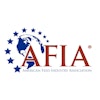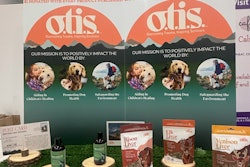
Don’t let the pursuit of perfection become a barrier to progress. That was a common message winding through the presentations during Petfood Essentials 2025, which focused on pet food sustainability.
“Progress is more important than perfection,” said Allison Reser, director of sustainability and innovation for the Pet Sustainability Coalition, during her opening presentation on April 28. She added that no company achieves perfect sustainability. “Perfection is not the end goal,” Reser said. “Sustainability is a journey, not a one-and-done project. There is no ‘end.’ It’s continuous.”
That was another theme, sustainability as a journey, among the Essentials presentations, as was the need to measure what you’re doing, and what your company is emitting, to better manage it. Even more importantly, several speakers stressed that you should focus on measuring and managing the areas with the most impact on your company’s carbon footprint.
Given that Petfood Essentials focuses on one topic, it’s not surprising that the presentations emphasized some of the same threads. Yet something similar happened with Petfood Forum 2025 sessions, which cover a much broader range of topics. What are some of the themes resonating in pet food now?
Pet food market is strong but not invincible
Running April 29-30, Petfood Forum sessions ranged from career development to the economy and pet food market to artificial intelligence (AI) and other new technologies to the latest nutrition and ingredient research to regulatory changes. Within these areas, some themes emerged and connected with the Petfood Forum audience.
For example, in his opening keynote, Ernie Tedeschi, director of economics for the Budget Lab at Yale Law School, delivered a rather sobering outlook on the state of the U.S. economy, especially under tariffs (in place or announced), and the effect on the pet food market. The good news is that despite rising prices and the threat of international trade disputes, pet food remains one of the most stable and recession-resistant sectors in the U.S. consumer market, he said.
But he warned pet food manufacturers and suppliers against complacency. “Pet food may be recession-resistant, but it’s not immune,” Tedeschi said. “We see clear evidence that consumers will trade down from premium to value brands if they feel financial strain. The total spend might stay the same, but the internal mix can shift.” That means businesses should recalibrate expectations and closely monitor SKU performance, promotional responsiveness and channel preference shifts.
Shannon Landry, pet brand manager at Packaged Facts, echoed this caution during her concurrent session presentation on how a focus on health and wellness is reshaping how pet owners spend. U.S. pet owners are starting to tighten their belts, she said, but they’re not willing to risk sacrificing their pets’ health to do so. Instead, they are perceiving value through the lens of health and wellness.
“Quality is still a top concern, despite belt-tightening,” Landry said. “Pet owners are prioritizing pet foods that support health in meaningful ways. That’s how they’re defining value now.”
Get out of your own way
During the career development concurrent session track on April 29, a panel of women pet food leaders all said one of the biggest barriers to advancing in a career can be getting in your own way. “I realized I had to stop being my own obstacle,” said Laura Moran, CEO of LPM Innovate and longtime industry member.
That advice was repeated by Michael Allison, CEO of the Adversity Academy Leadership Development Co., who delivered the opening address on April 30. In fact, his presentation was all about shattering your own limiting beliefs.
Similarly, the women panelists discussed the need to find and build your own community, echoing the comments of Karen Jones, vice president of learning and partner solutions for NextUp, who presented on the importance of connectivity. “Connectivity is currency in navigating a career,” she said.
It all comes down to puppies
Other themes emerged via the grouping of sessions within the concurrent tracks, including the growing use of AI in pet food, the continuing focus on the microbiome as well as pet joint health and the need for more attention and research on senior pets and pet obesity.
Yet, as usual, one of the features receiving the most attention during Petfood Forum was the presence of adorable, adoptable puppies! For the second year in a row, the Polk County Humane Society in Missouri brought in a small group, trained by students from Missouri State University. I doubt anyone at the conference missed a chance to at least briefly pet a puppy at some point, if not hold and cuddle one or more. Not only did they give everyone a much-needed furry fix, they reminded us all of why we’re in this industry.
The best news of all: All but two of the puppies were adopted before the end of Petfood Forum. (And one of those remaining two has since been adopted.)


















